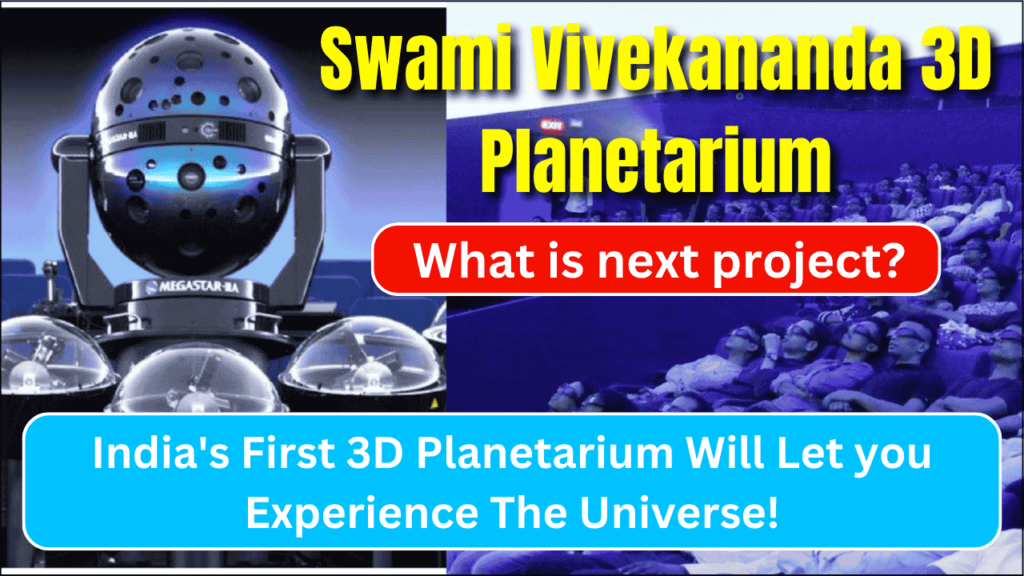
The PRSC campus is home to India’s first 3D planetarium, a state-of-the-art facility featuring an active 3D 8K hybrid system with a nanoseam dome measuring 18 meters in diameter and tilted at a 15-degree angle. The planetarium has a seating capacity of 173 and offers unidirectional viewing.
This project was fully financed by the Dept of Science & Technology, with funds checked through the Karnataka Science & Technology Promotion Society/KSTePS, Govt of Karnataka. The planetarium was started on 01 March 2018. It seems to become a central hub for astronomy-related activities in the region.
Located at Pilikula Nisargadhama in Mangalore, the Swami Vivekananda Planetarium (also known as Pilikula Planetarium) holds the distinction of being India’s first 3D planetarium. It is the only planetarium in the country to combine hybrid modern technologies with a cutting-edge 8K digital and optomechanical (hybrid) projection system.
Situated within the 370-acre Pilikula Nisargadhama, also known as Dr Shivaram Karanth Biological Park, the planetarium was designed to offer an exceptional educational experience for students and astronomy enthusiasts, with a focus on the Zodiacal system of planets. It was formed by the Pilikula Regional Science Centre.
History
The Swami Vivekananda Planetarium is India’s first state-of-the-art 3D planetarium. It was started in 2013 to celebrate the 150th birth anniversary of Swami Vivekananda. The respected person who laid the foundation stone of the organization was the Chief Minister of Karnataka, Jagadish Shettar. The aim was to complete it in two years under Rs 35.69 crore (US $4.1 million).
However, due to delays, the planetarium was only inaugurated on 01 March 2018. The project obtained a budget from the Karnataka Science & Technology Promotion Society/KSTePS. Its primary goal is to provide viewers, especially students and the general public, with an immersive experience of the stars and planetary systems in the universe. The planetarium was established as part of the Pilikula Regional Science Centre.
Designed to be the country’s first planetarium with an 8K digital and opto-mechanical (hybrid) projection system, five technical staff members were trained in Utah, USA, to operate the facility. Additionally, the planetarium has an annual maintenance budget of Rs 1.5 crore (US $170,000).
Technical specifications
The planetarium features a dome with an 18-meter (59-foot) diameter and can accommodate up to 170 people. The seats of the planetarium are adjustable. You can tilt the seat by 15 degrees to improve the audience’s viewing experience. It is furnished with a Megastar IIA optical projector. It is integrated with Digistar and a state-of-the-art active stereo with a 3D 8K digital planetarium system. It was designed and manufactured by Evans & Sutherland Computer Corporation in the U.S.
The planetarium projects the 3D images onto the dome screen. It represents an advanced stage of full-dome invention. It has an 8K ultra-bright LED projector, which utilizes 32 lenses from Ohira Tech Japan, and is conveyed to project, 20 million stars uniformly and seamlessly across the nano-seam panels of the dome. All this results in preventing overlapping visuals.
Programmes
The planetarium was started on March 1, 2018. The first show of the center was on March 2, 2018. There are 8 shows daily. The duration of one show is 25 minutes. The major 3D shows at the center are given below.
- We Are Stars
- Dawn of the Space Age
- Mysteries of the Unseen World
The shows are based on topics like environmental science, space technology, history, planets, nature, and geography. These shows are available in three languages- English, Hindi, and Kannada. The show named We Are Stars shows the concepts of the history of space, from the Big Bang to the present day.
Access
The planetarium is located at the Pilikula Regional Science Centre in Moodushedde. It is 9 kilometers (5.6 miles) from Mangalore approximately. The center is well-connected to the whole India country with the means of road, rail, and air. You will find the Mangalore railway station in the city center. The station connects the city to major cities such as Chennai, Mumbai, and New Delhi.
The distance of Mangalore International Airport is nearly 7 kilometers (4.3 miles) from the city center. The people who are coming by road, have to travel 350 kilometers (220 miles) west of Bangalore which is the capital of Karnataka.